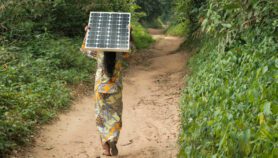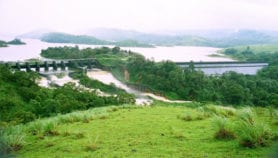By: Zoraida Portillo
Send to a friend
The details you provide on this page will not be used to send unsolicited email, and will not be sold to a 3rd party. See privacy policy.
[LIMA] Calculating the costs and benefits of investing in biofuels may become easier for policymakers with a guide launched by the UN Food and Agriculture Organization (FAO).
The Bioenergy and Food Security (BEFS) Analytical Framework, released last month (17 May), was developed over the past three years and tested in Peru, Tanzania and Thailand.
Heiner Thofern, head of the BEFS project, said that the goal is to help policymakers make informed decisions on whether development of bioenergy is a viable option for their countries and, if so, identify policies that will maximise benefits for the economy and minimise risks to food security.
For example, the report found that Peru’s natural biomass could meet local energy needs and contribute to poverty reduction by providing cheaper energy and offering new income opportunities.
And Thailand, which aims to increase biofuel production to five billion litres by 2022 through its alternative energy development plan, "has the means to realise the government’s plan for the development of the biofuels industry in a sustainable manner, without negatively impacting on food security".
But in Tanzania, biofuels could pose risks and could hamper food security, according to the BEFS report. Still, with adequate investments and policies, biofuels "can contribute to achieving the country’s development objectives of enhancing economic growth and reducing poverty", it said, highlighting cassava as a good biofuel option for the country.
"This is a very useful tool for policymakers and authorities," Julio Ugarte, coordinator of the World Agroforestry Center in Peru, told SciDev.Net. "As its step-by-step methodology is quite clear and backed by simulation models, it enables the answering of basic questions and the discussion of various issues involved in the bioenergy industry."
Miyuki Iiyama, a fellow at the Kenya-based World Agroforestry Centre, who recently cautioned the hype over jatropha biofuels, said: "The tool sets out to provide something that is greatly needed: a means of making objective decisions on investment in biofuels, taking into consideration the potential for biofuel production to compete with other land use and affect food security".
But it may be "too ambitious in [the] short run" for small African countries, where bioenergy activities are often sporadic and can lead to land grabbing from foreign investors.
"It requires considerable data and expert modelling which many small developing countries are not likely to have the capacity to implement just for bioenergy sectors. They might be better served by more practical and applicable methodologies."
Chris Buddenhagen, a researcher at Florida State University, United States, and former council coordinator of the Hawaii Invasive Species Council who developed a tool for assessing the risk of invasion by biofuel species, also welcomed the method, but warned that it seems hard to use and difficult to apply quickly to make the best policy decisions.
He also said the tool neglects some important issues, such as biodiversity and the invasiveness of biofuel species.
Bioenergy and Food Security — The BEFS Analysis for Peru
Bioenergy and Food Security —The BEFS Analysis for Tanzania
Bioenergy and Food Security — The BEFS Analysis for Thailand













